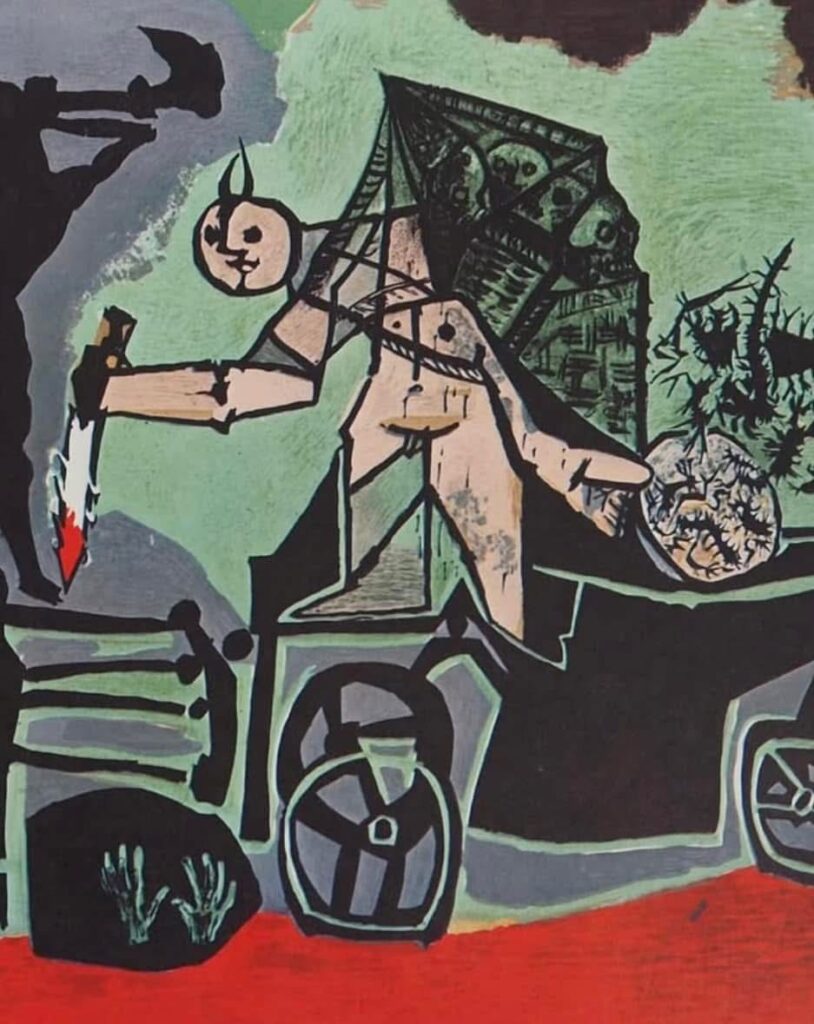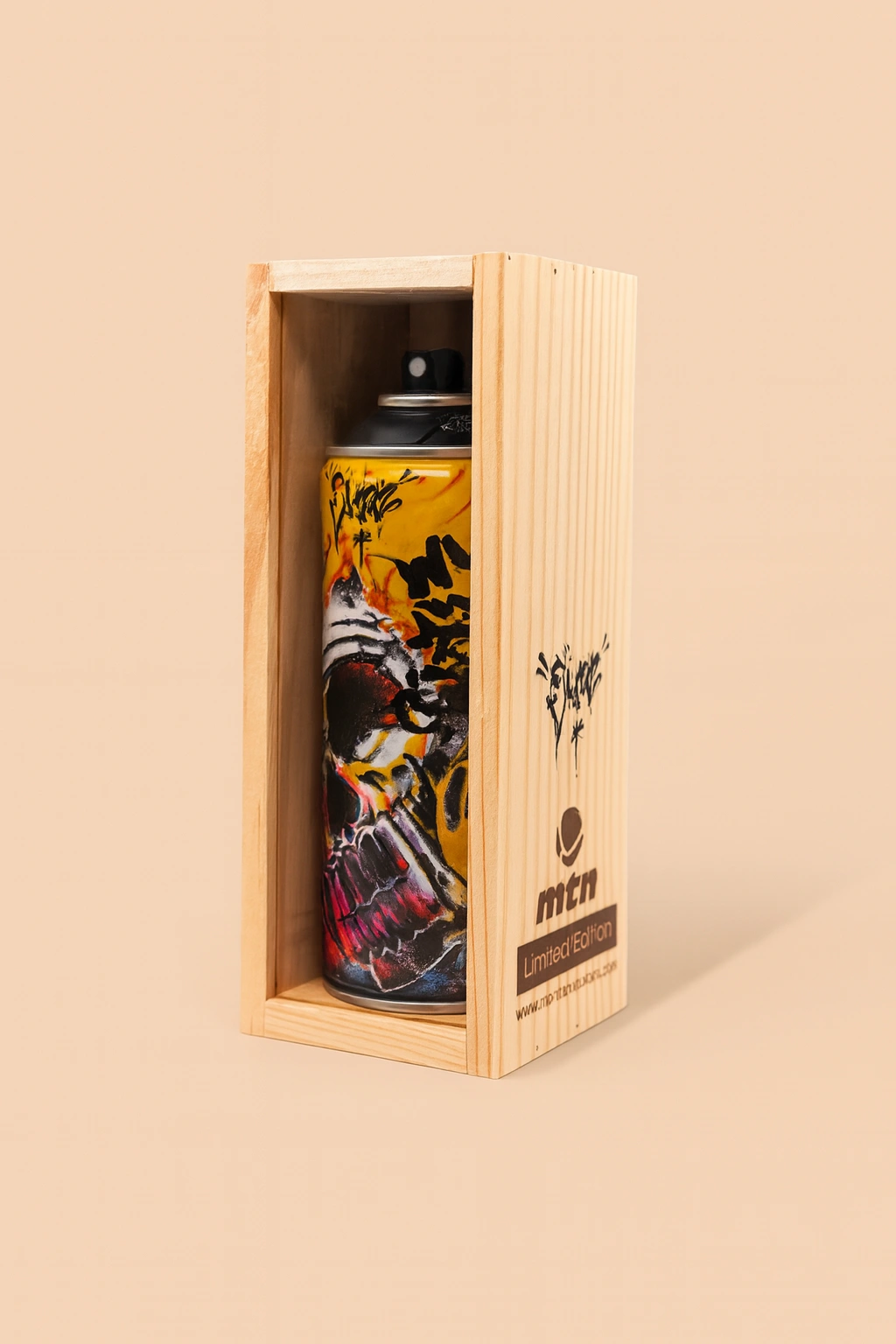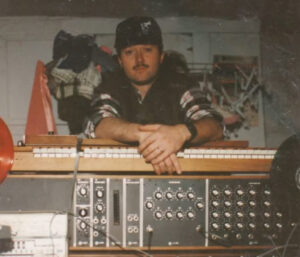Pablo Picasso’s War (1952) stands as one of the most striking artistic statements against violence and destruction. Created in the aftermath of World War II and during the rise of the Cold War, this painting serves as a haunting critique of human aggression. Through his unique Cubist style, Picasso masterfully captures the brutality, pain, and chaos of war, forcing viewers to confront its devastating consequences.
As one of the 20th century’s most influential artists, Picasso used War to express his deep political concerns and anti-war sentiments, much like his earlier masterpiece, Guernica (1937). While Guernica responded to the bombing of a Spanish town during the Spanish Civil War, War is a more universal representation of conflict, suffering, and destruction.
Picasso’s approach in War follows his distinctive Cubist and Surrealist-inspired style, characterized by fragmented forms, sharp angles, and distorted figures. These elements contribute to the painting’s intense emotional impact.
Chaotic Composition and Disjointed Forms
The painting features a nightmarish vision of war, where grotesque figures and twisted forms merge into a scene of destruction and turmoil. The fragmented bodies and distorted anatomy symbolize the loss of humanity in times of war. The central figure appears mechanical and deformed, suggesting that war dehumanizes individuals, turning them into mere instruments of violence.
• The Central Figure: The most dominant element in the painting is the warrior-like figure, wielding a bloody dagger. This figure embodies both the brutality and blind destruction of war.
• The Wheel and Machinery: The presence of wheels, weapons, and mechanical elements reflects the industrialization of war, highlighting how modern warfare has led to mass destruction.
• The Sack of Skulls: A chilling feature of the painting is the bag filled with skulls, a direct symbol of death, genocide, and the casualties of war.
• Hands Reaching from Below: The haunting green hands emerging from the red ground suggest the suffering of the innocent, possibly representing those buried beneath the battlefield.
• Contrasting Figures: The shadowy figure on the left wielding a hammer could represent the forging of weapons or the endless cycle of war and violence.
Color Palette and Emotional Effect
Picasso’s color choices enhance the painting’s emotional intensity. The muted greens, blacks, and grays create an ominous, almost apocalyptic atmosphere, while the red tones evoke bloodshed and suffering. The contrast between dark and light areas adds to the sense of chaos and destruction.
Picasso was a lifelong advocate for peace and social justice, and War serves as a powerful condemnation of violence. Unlike classical depictions of war that glorify heroism and victory, Picasso presents war as a monstrous, destructive force that consumes humanity.
The Impression of World War II and the Cold War
• The painting was created in 1952, at a time when memories of World War II were still fresh, and global tensions were rising due to the Cold War.
• Picasso was deeply concerned about nuclear proliferation, political oppression, and the threat of another world war.
• He aligned himself with peace movements, using his art as a tool for political activism.
A Call for Peace
Rather than depicting specific historical events, War conveys a universal message about the horrors of armed conflict. Picasso wanted his work to inspire reflection, outrage, and ultimately, a desire for peace. The grotesque figures and surreal elements serve as a visual warning against the cycle of violence that humanity continually repeats.
Picasso was no stranger to political art. Throughout his career, he created numerous works addressing war, injustice, and human suffering.
Connection to Guernica
• War shares thematic similarities with Guernica, Picasso’s most famous anti-war painting.
• While Guernica was inspired by a specific event (the bombing of Guernica in 1937), War is a more abstract and general representation of war’s brutality.
• Both paintings utilize distorted figures and fragmented forms to create a sense of horror and disarray.
Picasso’s Role as a Political Artist
• As a lifelong pacifist, Picasso became increasingly involved in political causes, joining the French Communist Party in 1944.
• His works from this period reflect his commitment to peace, and War can be seen as part of his artistic activism.
The UNESCO Mural
• War was originally commissioned as part of a large mural for the UNESCO headquarters in Paris.
• This setting emphasizes its role as a universal statement against war, aligning with UNESCO’s mission of promoting peace and international cooperation.
Influence on Contemporary Art
• War remains a reference point for modern artists exploring themes of violence and conflict.
• Many contemporary political artworks draw on Picasso’s expressive distortions and bold symbolism.
A Timeless Anti-War Message
• The themes of War remain painfully relevant today, as conflicts continue to devastate societies worldwide.
• Picasso’s ability to capture the horrors of war in a single image ensures that War continues to be a potent reminder of the need for peace and humanity.
Exhibition and Legacy
• War is frequently displayed in major retrospectives of Picasso’s work, alongside other political pieces like Guernica and Massacre in Korea.
• Its place in art history is cemented as one of the most powerful visual statements against war and violence.
Thoughts
Pablo Picasso’s War (1952) stands as a chilling, powerful, and deeply moving representation of the horrors of war. Through distorted forms, symbolic imagery, and a raw emotional palette, Picasso captures the senseless destruction and suffering that armed conflict brings.
At a time when the world was still reeling from World War II and facing the fears of nuclear war, Picasso used his art to advocate for peace and human dignity. Today, War remains a testament to the artist’s political consciousness and enduring legacy as a champion of social justice.
By transforming pain and horror into an unforgettable visual statement, War challenges viewers to reflect on the true cost of violence—and, ultimately, to strive for a more peaceful world.
No comments yet.








